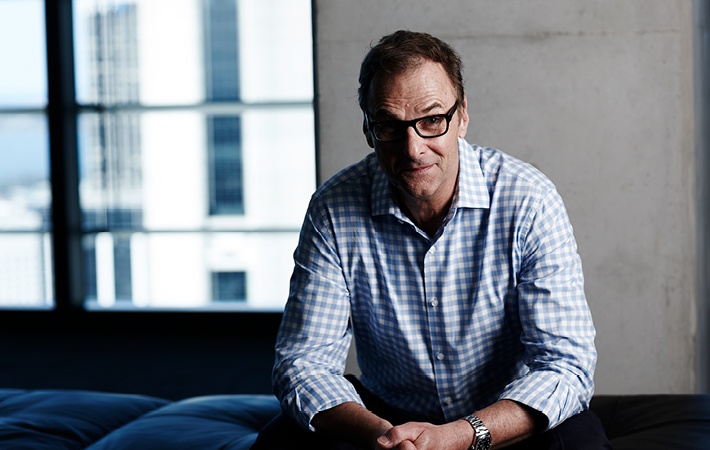A world-first case study for holistic workplaces

University of Sydney study demonstrated healthy workplaces are more than just a mindset
A world-first study by the University of Sydney’s Coaching Psychology Unit introduced the concept of a Positive Built Workplace Environment (PBWE) – a holistic approach to workplace wellbeing where positive workplace psychology extends beyond HR functions into building design, interiors and the social environment of a workspace.
The study, “Towards a Positive Psychology of Buildings and Workplace Community: Delineating the Benefits of the Positive Built Workplace Environment”, was conducted by Professor Anthony Grant, Sean O’Connor, Ingrid Studholme and Ariella Berger. The paper included an in-depth qualitative study conducted at International Towers, Tower Two and Tower Three, at Barangaroo in Sydney as a case study for how a PBWE promotes sustainable high performance – that is both organisational performance and employee wellbeing.
|DOWNLOAD THE WHITE PAPER HERE|
The study described “green” in the context of a PBWE as part of the key physical components of buildings and precincts that encompass design flexibility with a sustainable “green building” ethos.
Commenting on the findings, Professor Grant said: “For many years, we’ve seen the benefits of positive psychology in the workplace, including values-based leadership and values-based workplace environment or design on employee wellbeing. However, it is only now we are seeing the next wave of this workplace shift, where the two high-impact fields are brought together in a powerful integrated model.
“We are also seeing a more sophisticated approach to the structure of the workplace environment beginning to emerge where open-plan, flowing workspaces are balanced with accessible private rooms and workspaces. This is facilitating a shift from a hot desk setup to a more genuinely cooperative workplace environment.
The International Towers marriage between precinct design and leadership values from International Towers on Vimeo.
“Beyond this, there are now fantastic examples of where this purposefully wellbeing-oriented environment is structured to allow serendipitous ways of meeting, which is of course where we see some of the best workplace innovation emerge.”
“In this next generation model, which is uniquely reflected within the International Towers environment, we can see the three basic human needs of self-determination or autonomy, competence and relatedness being brought together by the design and management of this new generation of workplaces – the Positive Built Workplace Environment. Lots of organisations have open-plan, free flow workspaces, but very few have also harnessed a specific set of human needs and values and encouraged the leaders to enact those values across all levels of the workplace,” Professor Grant said.“It is the synergy between positive leadership, positive design, and positive values that makes the real difference. In today’s complex business environment, being high tech or ‘green’ is not enough – International Towers, Tower Two and Tower Three, has shown Australia and the world how to combine sustainability, aesthetics, design and – most importantly – positive principles to create a truly flourishing workplace,” he said.
According to the study, a PBWE puts the onus on the building property management team to move beyond the mere profit motive to actively promote positive values such as inclusiveness, respect and engagement.
International Towers’ management has adopted this rain or shine – going as far as only sourcing lobby umbrellas from a company that could provide proof of ethical manufacture and supply chain. Internally, the results have paid off for Tower Two and Tower Three with turnover of security staff about 10 percent compared the industry average of 50 to 400 percent per year.
Key findings of the report were that a well-designed working layout and “green” working environment can:
- Increase organisational productivity by 19 per cent
- Increase individual performance on cognitive tasks by more than 61 per cent
- Reduce respiratory complaints and headaches by 30 per cent and help people sleep better
International Towers General Manager Tony Byrne said the savings to industry couldn’t be underestimated.
“By taking an inside-out approach to wellbeing, employers would be rewarded with greater innovation and customer-facing outcomes, while reducing work-related stress at the same time.”
Creating optimal conditions for employees, in collaborative settings such as International Towers, has an added bonus of being a drawcard for new and top talent, particularly millennials,” Mr Byrne added.
What is a positive workplace environment?
The research process and the self-determination theory
Defining happiness in a healthy workplace
Finding the best workplaces that combine design and leadership values
How values-based leadership transforms company culture
The importance of having a positive built working environment
Creating a flourishing workplace: A message to leaders
The impact of having a pleasant workplace
Generational trends and how it impacts the workplace
Facts and findings from International Towers study of workplace environments
A world-first study on the relationship between workplace design and leadership
The International Towers marriage between precinct design and leadership values
Built environment and core leadership values
Clarifying and applying personal values in the workplace

